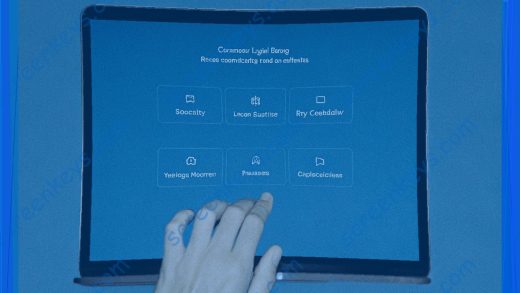The loss settlement provision in insurance policies is a critical element that determines how claims are paid out to policyholders after an insured event. This provision outlines the method and amount of compensation the insured will receive for a covered loss. It is essential for policyholders to understand this aspect of their insurance contract to avoid surprises during the claim process. In many cases, the details of the loss settlement can significantly impact the final amount received, making it a cornerstone of the insurance agreement.
Types of Loss Settlement Provisions
When it comes to determining the final settlement amount after a loss, several critical factors come into play. Understanding these factors can help policyholders anticipate the potential payout and take proactive steps to maximize their settlement. Below is a breakdown of the key factors that influence loss settlement amounts:
- Condition of Property: The state of the property at the time of loss, including maintenance and upkeep. A well-maintained property is likely to receive a higher settlement, as depreciation is less significant. Conversely, a poorly maintained property may result in a lower payout due to accelerated depreciation. Regular maintenance and upkeep can help mitigate depreciation and increase the potential settlement amount.
- Valuation Method: The process used by the insurance company to assess the value of the damaged property. Accurate valuation ensures fair compensation. Inaccurate or underestimated valuations may lead to disputes or lower settlements. Policyholders should be proactive in understanding how their property is valued and be prepared to challenge any discrepancies to ensure a fair payout.
- Market Fluctuations: Changes in the market value of property or materials since the policy was issued. Increases in market value can result in a higher settlement, while decreases can lower the payout. This is particularly relevant in volatile markets. Monitoring market trends and reviewing coverage limits periodically can help ensure that the policy remains adequate to cover potential losses.
- Local Building Codes: Regulations that may require property upgrades to meet current standards following a loss. Settlement amounts may increase to cover the cost of required upgrades if the policy includes coverage for building code compliance. Without such coverage, the policyholder may need to pay out-of-pocket for these additional costs. It is advisable to ensure that the insurance policy includes coverage for any necessary code upgrades, especially if local building codes have changed since the policy was purchased.
By understanding and considering these factors, policyholders can better prepare for potential losses and ensure that they receive a settlement that accurately reflects the value of their property and the cost of necessary repairs or replacements. Regularly reviewing and updating insurance policies to account for changes in these factors is a wise strategy to maintain adequate coverage and financial protection.
Factors Influencing Loss Settlement Amounts
Several factors can influence the amount of settlement a policyholder receives under the loss settlement provision. These include the condition of the insured property at the time of loss, the accuracy of the valuation, and the specific terms outlined in the policy. Additionally, external factors such as market fluctuations and local building codes can also play a role in determining the final settlement amount.
One critical factor is the condition of the insured property. If the property is well-maintained, the insurer may be more likely to offer a higher settlement under an ACV provision, as the depreciation will be less significant. Conversely, if the property has not been maintained, the insurer may reduce the payout to reflect the additional depreciation.
The valuation process is another important factor. Insurance companies typically assess the value of the damaged property based on pre-established guidelines, which can sometimes differ from the actual market value. Policyholders should be aware of how their property is valued and, if necessary, challenge the insurer’s valuation to ensure they receive a fair settlement.
Below is a table that outlines key factors influencing loss settlement amounts and their potential impacts:
| Factor | Description | Impact on Settlement | Considerations for Policyholders |
| Condition of Property | The state of the property at the time of loss, including maintenance and upkeep. | Better condition can lead to a higher settlement, while poor condition may reduce it. | Regular maintenance can mitigate depreciation and increase payout. |
| Valuation Method | The process used to assess the value of the damaged property. | Accurate valuation ensures fair compensation; inaccurate valuation may lead to disputes. | Be proactive in understanding how your property is valued. |
| Market Fluctuations | Changes in the market value of property or materials since the policy was issued. | Market increases can raise settlement amounts, while decreases can lower them. | Consider market trends when reviewing coverage limits and provisions. |
| Local Building Codes | Regulations that may require upgrades to meet current standards. | May increase settlement to cover the cost of required upgrades. | Ensure policy includes coverage for code upgrades if necessary. |
This table illustrates how different factors can influence the final settlement amount, highlighting the importance of regular property maintenance, understanding valuation processes, and considering external influences such as market conditions and building codes. Policyholders who are aware of these factors can better manage their insurance coverage and claims process, ensuring they receive the most appropriate settlement in the event of a loss.
Depreciation and Its Impact on Settlement
Depreciation plays a significant role in loss settlement, particularly under the ACV provision. Depreciation is the decrease in the value of an asset over time due to wear and tear, age, or obsolescence. In the context of insurance, depreciation directly affects the amount of compensation a policyholder receives after a loss.
When a claim is filed, the insurer will typically calculate the depreciated value of the damaged property to determine the payout. This can lead to a situation where the settlement amount is substantially lower than the cost to replace the item. For example, if a ten-year-old roof is damaged, the insurer might only pay a fraction of the cost to install a new roof, based on the assumption that the roof has already lost a significant portion of its value.
Policyholders can sometimes mitigate the impact of depreciation by opting for replacement cost coverage instead of ACV. However, this choice must be made when purchasing the policy, as it cannot usually be changed after a loss has occurred. Understanding how depreciation affects settlement is crucial for making informed decisions about the type of coverage to buy.
The Role of Deductibles in Loss Settlement
Deductibles are another key element that influences the loss settlement amount. A deductible is the amount that the policyholder must pay out of pocket before the insurance company pays the remaining balance of the claim. Deductibles are a form of cost-sharing between the insurer and the insured, intended to prevent small, frequent claims and to lower the cost of premiums.
There are generally two types of deductibles: fixed-dollar deductibles and percentage deductibles. Fixed-dollar deductibles require the policyholder to pay a set amount, such as $500 or $1,000, before insurance coverage kicks in. Percentage deductibles, on the other hand, are calculated as a percentage of the insured value of the property. For example, a 2% deductible on a $200,000 home would be $4,000.
The choice of deductible has a direct impact on the loss settlement. A higher deductible usually means lower premiums, but it also means that the policyholder will have to bear a larger portion of the cost in the event of a claim. Therefore, when selecting a deductible, policyholders must carefully balance their ability to pay out of pocket against the savings on premiums.
Understanding the potential outcomes of different loss settlement provisions can be complex. Below is a table that summarizes the key differences between Actual Cash Value (ACV) and Replacement Cost (RC) settlements:
| Scenario | Actual Cash Value (ACV) | Replacement Cost (RC) | Implication for Policyholder |
| Roof Damage | Depreciated value of the roof is paid | Full cost to replace the roof is paid | RC offers more coverage, but higher premiums |
| Home Contents | Value based on age and wear of items | Cost to replace items with new ones | RC ensures the ability to replace all items |
| Natural Disaster | Depreciated value for all damages | Full replacement cost for all damages | RC provides better financial recovery |
| Old Vehicles | Low payout due to high depreciation | N/A (typically only ACV available for vehicles) | ACV often results in a lower settlement |
This table highlights how the choice between ACV and RC can significantly impact the compensation received after a loss. Policyholders should consider their financial situation and the condition of their insured property when deciding which type of loss settlement provision to select.
Legal and Regulatory Considerations
The loss settlement provision is also shaped by legal and regulatory frameworks that vary by jurisdiction. Insurance laws dictate how insurers must handle claims, including timelines for payment, how disputes are resolved, and what constitutes a fair settlement. Understanding these legal requirements is crucial for both insurers and policyholders to ensure that the claims process is conducted fairly and efficiently.
For example, in some states or countries, there are laws that require insurers to provide a minimum level of coverage or to pay claims within a certain period. Failure to comply with these regulations can result in penalties for the insurer and additional compensation for the policyholder. Additionally, there may be consumer protection laws that give policyholders the right to appeal a settlement decision or to seek legal recourse if they believe they have been treated unfairly.
Regulatory bodies, such as state insurance commissions in the United States or similar authorities in other countries, oversee the insurance industry and enforce these laws. They also provide resources for policyholders who need assistance in understanding their rights or resolving disputes. Familiarity with these legal and regulatory considerations is essential for navigating the complexities of loss settlement.




